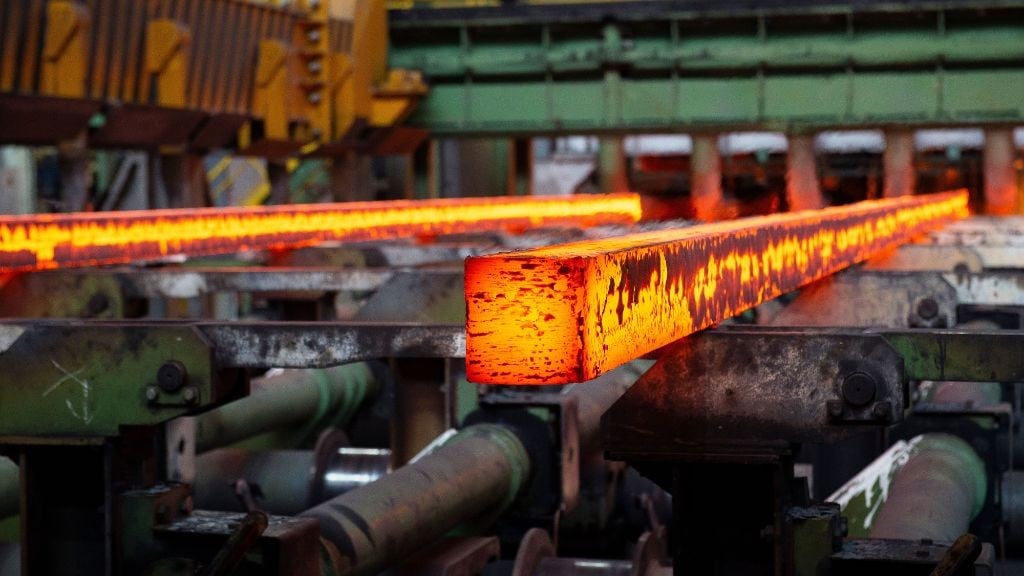Stainless steel market faces global imbalance and uncertainty
Constant fluctuations in trade, tariffs, and oversupply are dampening the global steel market

A massive shift in stainless steel production over recent years has created severe challenges, particularly for producers and suppliers based in Europe. A clear message emerged from the latest meeting of BIR's Stainless Steel and Special Alloys Committee held in Valencia in late May cocnerning the downturn in European steel trade and production.
Global steel trade fluctuates drastically
Ritesh Maheshwari of India-based Shabro Metallic Pvt Ltd gave his summary of the latest BIR World Mirror on Stainless Steel and Special Alloys. Signs of recovery in Europe's stainless steel market had been derailed by recent U.S. tariff announcements, and first-quarter financial reports from a number of major European mills had indicated a decline in margins.
In Asia, meanwhile, China's mills continue to increase production, thereby adding to an oversupply. India's finished stainless steel output had risen 13 percent to 3.7 million tonnes in the April 2023-March 2024 period but scrap imports had dipped 1-2 percent to around 1.3 million tonnes. Mills were exercising caution amid the current climate of uncertainty, aligning their import decisions with current order books rather than stockpiling.
In the Middle East, prices were rising owing to increased raw material inflation, supply chain issues, and energy costs.
Turning to nickel, Maheshwari pointed to a decline in demand from the battery sector owing to a shift for nickel-free batteries; a 19 percent drop had been recorded in demand for nickel-manganese-cobalt batteries.
A drastic decline in Europe's steel industry
A typically high-energy presentation from Markus Moll, Managing Director of SMR GmbH in Austria, began by painting what he described as "an ugly picture if you are European". A quarter of a century ago, Europe was accounting for approximately 40 percent of global stainless steel production but that share has now slumped to less than 10 percent. With Indonesia and China becoming increasingly dominant players, he said: "There is a real risk that we could lose our supply chain here in Europe — and if upstream dies, also downstream dies."
Overall, he expected 4 percent growth in crude stainless steel production this year, with Europe the most sluggish, whereas gains of 20 percent and 3 percent were anticipated for, respectively, Indonesia and China. A single company, Tsingshan, was now producing 30 percent of the world's stainless steel, rising to 40 percent for austenitic. "This is frightening," commented Moll.
The guest speaker had some positives to offer: with the exception of India, all regions worldwide had recorded a higher scrap ratio in 2024 than in 2023 — including China, where local availability was improving; and stainless steel stock levels were low worldwide, except in China.
However, he closed his presentation with a warning about the risks posed by imports to Europe's fabrication future. "There are some products — heat exchangers, for example — and some value-added products where we need to make sure that they can be produced in Europe profitably," he said. "It is a constant erosion of our market here, and if we do nothing then we will end up probably in 10 years from now with a market that is only half as big as it is right now."
Recycling continues to play an important role in the steel industry
Jianbin Meng, Director of Economics and Environment at the Portugal-based International Nickel Study Group, provided data and comments that underlined the crucial role played by recycling. His organization had calculated that, in 2023, there had been around one million tonnes of nickel scrap input for stainless steel production.
While stainless steel would remain the largest nickel-using industry in the coming years, there was also an emerging demand from the battery sector to feed the growth in electric vehicle (EV) sales. The EV share of total car sales had climbed to 22 percent in 2024, "far ahead of the estimation made in the past several years", he said. "And there is still big room to grow the market."
According to the speaker, the recycling industry was fundamental to meeting the growing energy and technology transition demand for critical raw materials and should look to position itself accordingly. He urged the sector to "adopt advanced recycling technologies to leverage all the supporting policies contained in all the regulations, initiatives and acts".
A discussion period followed during which questions were posed by Rosie Hill of UK-based Ireland Alloys Ltd and by the chairman of BIR's Stainless Steel and Special Alloys Committee, Joost van Kleef of Oryx Stainless BV in the Netherlands. Among the responses, Moll predicted that, within the next five to 10 years, "China will make a big jump up in superalloys for jet engines". He also observed that the U.S. was a clear net importer of nickel alloy scrap and so was unlikely to impose tariffs.



